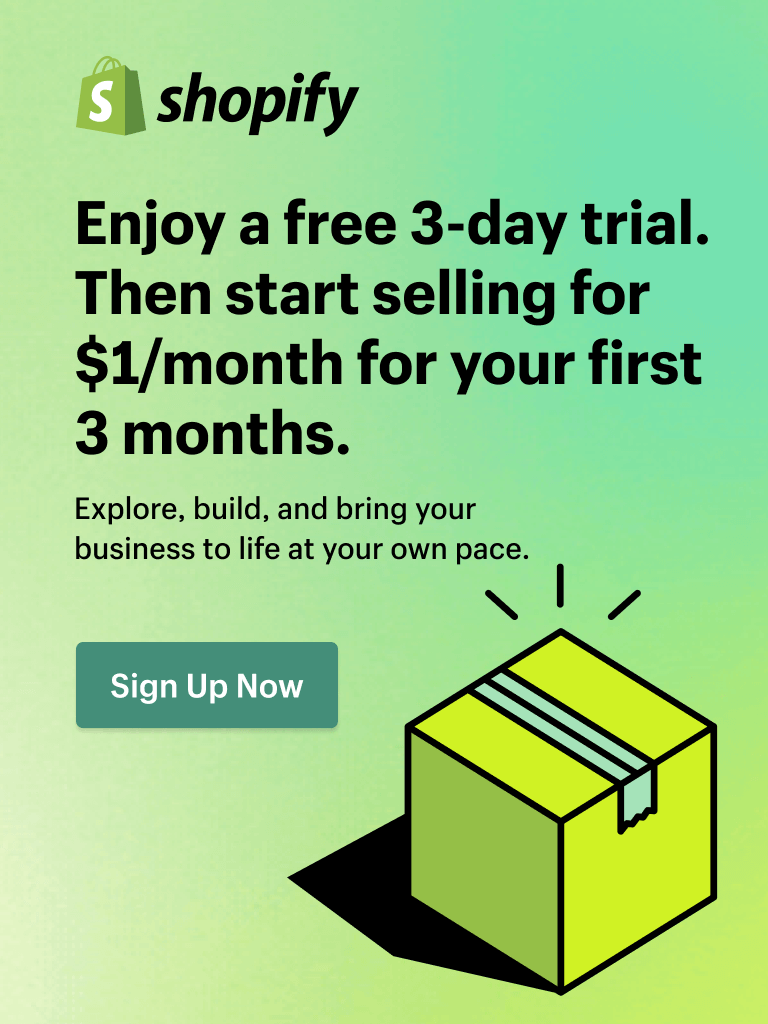Are you a new Shopify store owner feeling overwhelmed by the world of online sales? You've poured your heart and soul into building your dream store, but are you seeing the results you hoped for? Many new Shopify entrepreneurs face the same challenge: Low conversion rates. This means visitors are browsing your store, and they're not clicking "Buy" but not completing the purchase.
This blog post is specifically designed for new and struggling Shopify store owners, and it's packed with conversion rate optimization techniques to help you boost your Shopify sales.
We'll dive into the most common reasons why visitors abandon your store, and provide specific tips you can implement immediately. Get ready to turn more browsers into buyers and watch your sales skyrocket!
Top 3 reasons leading to your online sales failure
According to Forbes, 20% of eCommerce businesses didn't make it in the first year. By the end of the next year, 30% of them have failed, with that number climbing to 50% within 5 years.
Everyone understands that the competition is fierce, but for start-up owners, there are still underlying reasons leading to the collapse of a business.
Let's take a look at each and find out how to help you tackle these struggles.
Reason 1: Targeting the Wrong Audience
Even if you've got a killer product, if you're not attracting the right audience, your conversion rate will be stuck in the sand. It's like trying to sell surfboards in the middle of a desert – beautiful boards, but not many potential customers.
This is exactly what happens when you target the wrong audience in your Shopify store. You may have a product that you're confident about, but if you're marketing it to people who have no need or interest in it, your efforts will be in vain.
The problem with targeting the wrong audience goes beyond wasted resources.
Imagine someone looking for a specific type of product and landing on your website instead. They'll likely leave quickly, potentially feeling misled or frustrated. This can create negative associations with your brand, making it harder to attract your ideal customers in the future.

Source: Nielsen
The key to success lies in attracting the right audience - your ideal customers. By understanding their needs, wants, and online behaviours, you can tailor your marketing messages and offerings to resonate with them, ultimately driving conversion rates and online sales.
Here's how you can bridge to the right destination and travel smoothly to your customers.
Tip 1: Create your buyer persona
Who are the people who have the problem your product solves?
What are their ages, genders, interests, and income levels?
Are they even aware they have a problem?
By answering these questions, you're not just getting to know your audience - you're at the first round in thriving conversion rate - building a customer persona.
A customer persona is a fact-based profile of your main types of customers. It includes information on their demographics, careers, goals, challenges, motivations, behaviours, where they spend time online, where they get their information from, and more.
A MarketingSherpa case study revealed the power of personas, showcasing their dramatic impact on marketing success. The study reported staggering results:
- 100% increase in website visits
- 900% jump in time spent on the site
- 111% boost in email open rates
- 171% increase in marketing qualified conversion rate for companies that implemented personas.
While extensive personas can be helpful, keep your persona simple as a startup scaling your online sales.

Source: WordStream
Here are 4 steps to build a comprehensive persona for your high conversion rate Shopify business:
- Naming your buyer persona: Give your persona a name that reflects their personality and aspirations. For example, you could call them "Sarah the Savvy Shopper" or "David the DIY Enthusiast."
- Collecting Demographic traits: The more detailed your persona can be, the closer your marketing activities can attract more customers.
- Uncover Their Goals and Challenges: What are they trying to achieve in life, work, or their personal lives? What challenges are they trying to overcome? How does your product help them achieve their goals or solve their problems?
- Research on customer habits: Where do they spend their time online? What content do they consume? How do they make purchasing decisions?
Tip 2: Know your competitors
Opening a Shopify store is exciting, but the online shopping landscape can feel crowded with other sellers. Think of it like a giant market with tons of booths selling similar stuff. To get customers to notice you, you gotta know who else is there!
Identify Your Competition
Businesses usually categorize their competitors into 3 pieces:
-
Direct Competitors: These are businesses selling the same products or offering very similar services.
Brands like Lululemon, Nike, and Athleta are all direct competitors by offering similar women's athletic leggings. They target the same audience (active women) and offer similar features like performance fabrics, moisture-wicking technology, and a variety of styles and lengths.

Source: Athleta
-
Indirect Competitors: These businesses might sell different products, but they target the same audience or address the same customer needs.
While not selling the exact product, online retailers like Old Navy could actually be an indirect competitor of those brands above. They sell women's activewear like yoga pants or joggers, which might cater to the same target audience who may be looking for a more budget-friendly option compared to high-performance athletic leggings.

Source: Old Navy
-
Substitute Competitors: These businesses offer alternative solutions to the problems your products solve. While not direct competitors, they present alternative ways for customers to fulfil their needs.
Online fitness classes or platforms offer a substitute for those who prefer guided workouts at home. This can be a substitute for someone looking to improve their fitness but not needing specific athletic apparel.

Learn from them
Since you're new in the market, learning from successful strategies is indeed necessary, especially learning from competitors.
There are 3 things that you want to keep an eye on:
- Pricing & Products: Analyze their pricing strategy, product range, and unique selling points (USPs). Are there gaps you can fill by offering a better price, more features, or a unique twist?
- Customer Experience: Do they offer excellent customer service? How do they handle returns and complaints?
- Marketing Strategies: See where they advertise, how they use social media, and what kind of content they create.

Source: BDC
Find your Edge
Based on your research, pinpoint areas where your competition falls short, optimize them, and capitalize on the strengths to differentiate yourself and attract customers.

Source: Shopify
Don't be afraid to showcase what makes you special such as handcrafted products or offering a curated selection. Highlight your unique value proposition to resonate with your target audience.
Armed with a deep understanding of your customers and competitors, and brimming with confidence in your killer products, you're ready to launch your Shopify store.
However, the journey to success doesn't end there.
Many stores struggle with low online shopping purchases, often due to a critical factor: friction.
Reason 2: Friction
Have you ever been on a website that feels like a maze?
You were looking for something but couldn’t find it easily, or you click on something, and it takes you somewhere unexpected. Suddenly you're lost, frustrated, and not in the mood to buy anything! That's friction in action.
Here are 2 common frictions and essential tips to tackle them:
Tip 3: Display your customer reviews
Imagine you're strolling down a busy street, hungry for a bite. You see 2 restaurants side-by-side.
One is deserted, with no enticing aromas wafting from its kitchen.
The other?
Bustling with happy diners and the mouthwatering smell of delicious food.
Which one are you more likely to try?
We humans are social creatures, and we instinctively trust the opinions of others, especially when it comes to trying something new.
That's where social proof comes in.
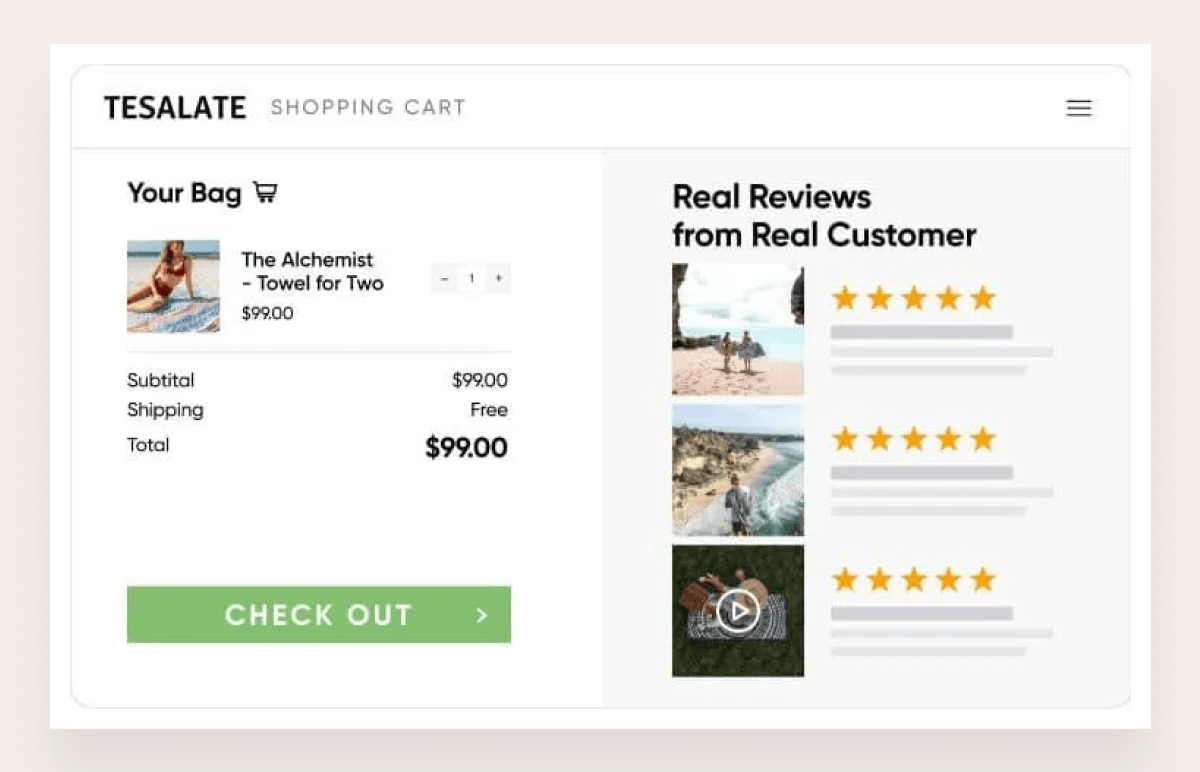
Source: Mayple
A recent study by PowerReviews found that a whopping 93% of shoppers rely on social proof to decide whether or not to buy something. Social proof is like online recommendations.
Put simply, if potential customers don't trust your brand, they won't buy from you.
How can you build trust and boost your conversion rate? Here are some tips to leverage social proof and optimize your Shopify store to convert more browsers into buyers
Hero section showcase
Feature positive customer reviews or testimonials prominently on your homepage, right where visitors first land. This creates a strong first impression and builds trust instantly.

Source: Privy
Logos display
Display logos of well-known brands that use your product or service. Big names can lend credibility and inspire confidence in potential customers.

Source: Deepai Gurbani
Testimonials
Share genuine customer testimonials written out. Include quotes and even screenshots from social media interactions for an extra touch of authenticity.
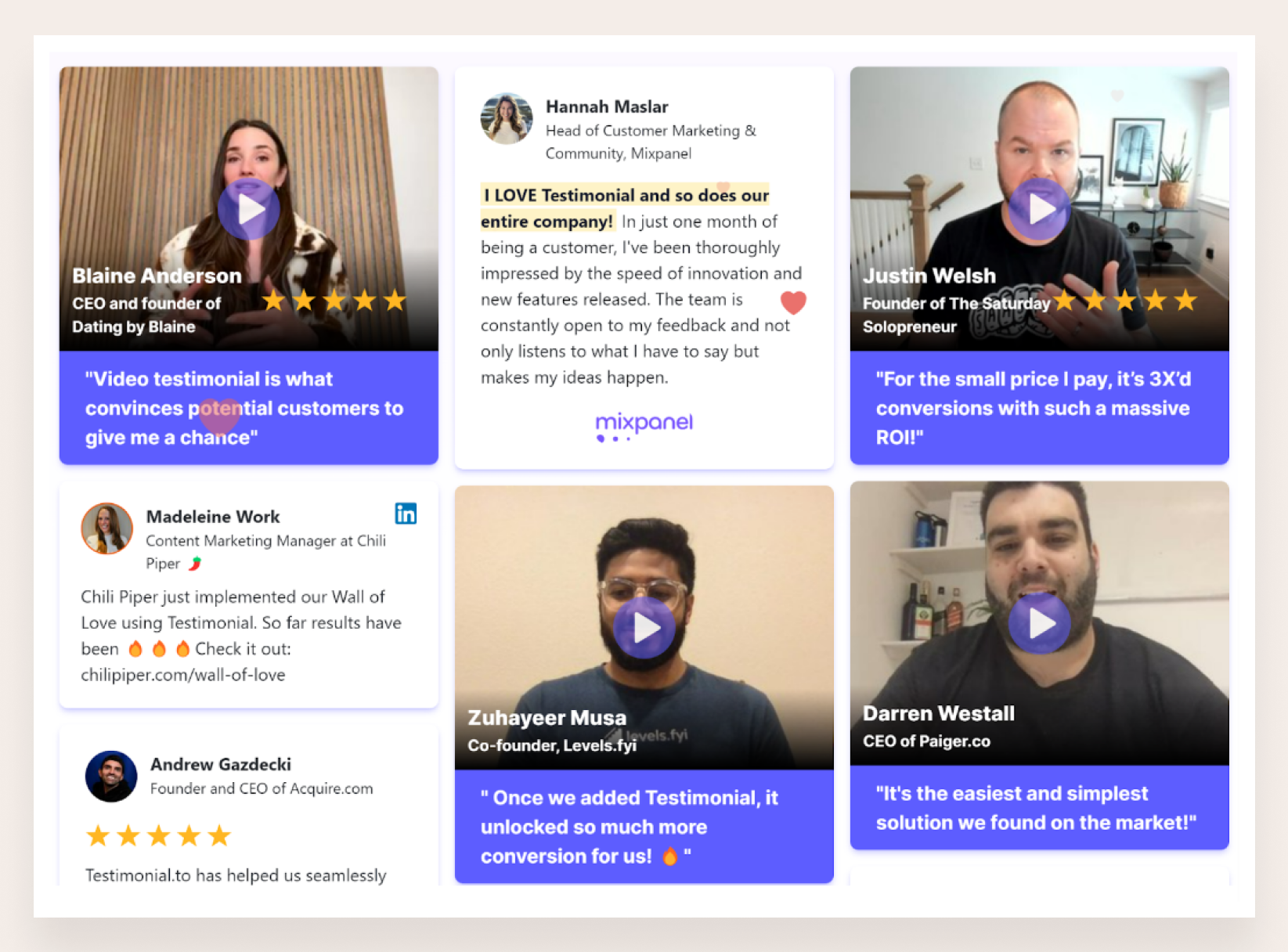
Source: Testimonial
Since testimonials are from highly satisfied customers, they are positive and can be a perfect tool to attract new online shopping customers. That's why you need to create outstanding and interactive testimonials like:
- Testimonial Carousel
- Testimonials in Masonry Grid
- Before/ After Product Testimonials
- Video Testimonials
👀 You can find all these designs in Best Testimonials Design Templates for Shopify Stores.
Before/ After using your product or service
Video may be the most engaging, but a before/ after image slider can help potential customers see the transformation from start to finish and trust your business on a deeper level.
Source: FoxEcom
By incorporating a Before/After Image Slider into your Shopify storefront, you can vividly illustrate how your products meet and exceed customer needs.
Bet you're finding a tool that can help you build trust with potential customers through social proof!
We recommend Foxify - A high-converting page builder. With Foxify, you can create stunning and trustful storefronts, help customers overcome their initial hesitation, and ultimately drive sales for your Shopify store.
🔥 Further reading:
- Social Proof for Shopify Stores: Best Practices & Real-world Examples
- Top 6 Social Proof Apps and Tools to Build Your Brand
Tip 4: Optimizing the checkout pages
Imagine you've spent hours browsing a store, filling your arms with amazing finds. At the checkout page, you're forced to create an account, encounter long processes, and face surprise fees. Frustrated, you leave empty-handed.
This scenario, sadly, plays out far too often for online shoppers.
70% of checkouts are abandoned on average and if you want to save the conversion rate, you need to pay attention to these carts.
Here's how to avoid these checkout headaches and boost your Shopify sales.
Check out as a guest
Not everyone wants to create an account just to buy a single item.
Offer a "guest checkout" option to streamline the process and avoid scaring away potential customers. A study found that 24% of people abandoned carts solely because of mandatory account creation.
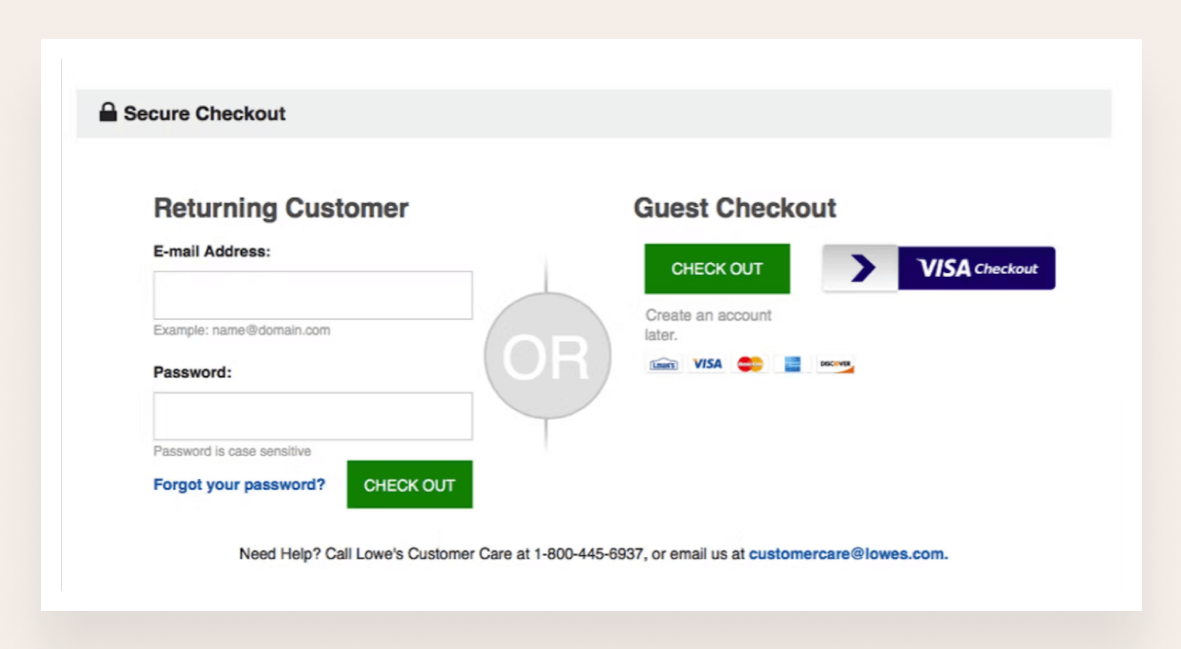
Source: User Testing
📚 You may also like:
- 5 Expert Tips to Optimize One-Page Checkout for All Shopify Stores
- 7 Tips To Optimize Your Checkout Process
Visuals Reminders
Have you ever filled a shopping cart at the grocery store only to reach the checkout and realize you forgot something? The same thing happens online!
People add items to their carts but might need to remember what's exactly in there.
A study by the Baymard Institute found that 86% of the top 100 eCommerce sites display product thumbnails on the cart page. This isn't just a coincidence! Including clear thumbnails throughout the checkout process helps customers quickly review their selections and make buying decisions faster.

Source: Tony’s chocolonely
Apply automated discount codes
A recent survey from RetailMeNot found that 80% of shoppers said they feel encouraged to make a first-time purchase, especially with a new brand if it had an offer or discount.

Source: Digismoothie
Since we all love a good deal, be generous to have discounts, in-cart offers, or free shipping codes available and automatically apply them at checkout.
This saves customers time and effort, making them more likely to click "Buy"!
Upfront transparency
Hidden fees are the enemy of a smooth checkout experience!
In the survey published by Baymard Institute, 60% of buyers agreed that unexpected extra costs are the most important reason they abandon a shopping cart.
These extra costs include shipping, tax, and other fees. To avoid this, you should display the total price upfront in the checkout process.
Moreover, Shopify cited that 47% of customers say they’ll spend the minimum amount to get free shipping consumers are willing to spend extra to receive free shipping because they believe that they’re getting more value by purchasing an additional item than paying for shipping.

Source: FoxEcom
With that metric in mind, you can consider offering them free shipping to reduce the risk of cart abandonment and increase sales.
🔥 Further reading: How to Offer Free Shipping to Increase Shopify Sales
Payment gateway
Use familiar payment gateways that users already trust. Consumers are reluctant to surrender their credit/debit card details to eCommerce sites they don’t trust.

Source: Bookeo
By addressing these checkout frictions, you'll create a smoother, more user-friendly experience that keeps customers happy and increases your conversion rate.
And if your business is struggling with low conversion rates you can also try these 5 Design Changes to Increase Conversion Rate by 50 - 200%.
And now after addressing these frictions, it’s time to consider the one underrated factors that most businesses don’t pay a lot of attention to… Copywriting.
Reason 3: Copy Sucks
Words are powerful.
They can make you laugh, cry, convince you to buy something, or even sell something.
But the wrong words can also send people running for the hills.
Bad copywriting is a major conversion rate killer.
SEMRush reported that 43% of low-performing content has too many long sentences and complex words.
So, let's tackle 3 common copywriting mistakes and show you how to fix them to increase your Shopify sales:
Tip 5: Jargon-free Copywriting
Nobody wants to feel like they need a dictionary to understand your brand or product descriptions. Use clear language that especially your target audience can easily understand.
Not everyone in your audience is an industry expert. Using simple phrasing ensures everyone understands what you're selling and the value you offer.

Source: ProsperOps
Check out ProsperOps, a tech company where even everyday people can grasp their offerings thanks to their clear, concise copywriting. They emphasize 2 key points: their solution is automatic and it reduces costs.
To produce clear and easy-to-understand content, you may take a quick check of these 5 tips for clearer copywriting for your store:
- Talk like a friend: Use contractions and casual language.
- Ask questions: Get your customers talking about their problems.
- Borrow their words: Interview customers to find out how they describe things.
- Focus on "you": Make it about your customer, not your business.
- Keep it simple: Short sentences and easy words are best.
👀 Read Expert Tips in 5 Tips to Write Jargon-free Content People Can Actually Understand
Tip 6: Benefit Focused
The truth is people don't care about your brand or their features. They only care about how it benefits them. And Colgate gets it!
Colgate is the world’s largest toothpaste brand and all they wrote in their headline is about the power of a smile. Think about it: Do you care more about the fancy ingredients in your toothpaste or the bright, confident smile it gives you?

Source: Colgate
You might also relate to Apple's case, where instead of emphasizing technical specifications, Apple focuses on how their products enhance users' lives, making them more creative, productive, and connected.

Source: Apple
Tip 7: Leveraging Emotional Connection
According to a Nielsen report, ads that evoke feelings of happiness perform 23% better than neutral ads in terms of viewer engagement.
In 2021, Edelman found that 61% of consumers said they would buy from a company they trust, even if it had higher prices than its competitors.
Certain emotions like joy, trust, and surprise are particularly effective in attracting consumer attention and fostering engagement, as cited by "The Emotional Effectiveness of Advertisement" research.
Let’s understand this with an example.
Compare other courses' headlines with DesignAcademy's.
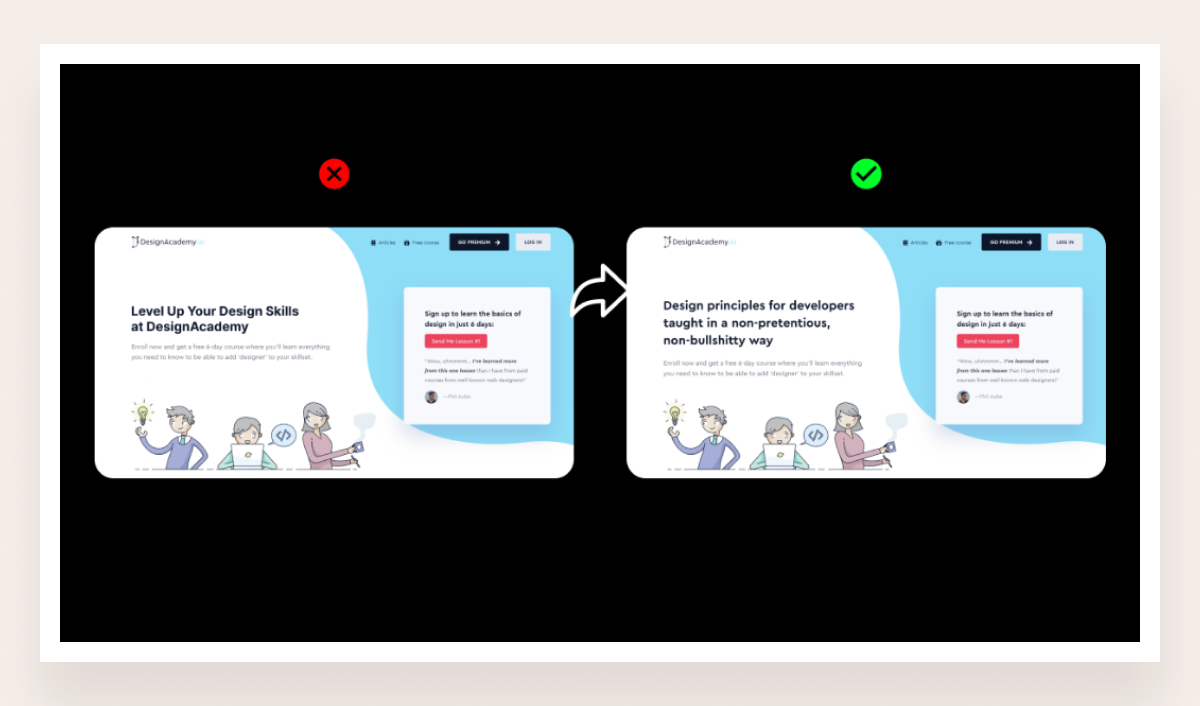
Source: DesignAcademy
Their target audience is developers who want to learn design, but they know this audience is more logical than creative, so they need a non-pretentious and non-bullshit way to learn design - Such a fun, yet straight-focused on customer needs content.
By fixing these copywriting mistakes, you'll create a more engaging and persuasive storefront experience that leads to more online sales for your Shopify store.
- Bonus Tip: If you've made it this far, you're probably taking conversion rate optimization seriously. Here's a simplified psychology lesson: People buy based on emotions and justify their purchases with logic. So, tap into their emotions with your copywriting, then give them logical reasons to buy with clear product information.
📚 You might also like:
- 7 Techniques to Skyrocket Sales for Your Shopify Store
- Maximize Your Revenue with These 5 Shopify Marketing Strategies
Why People Buy
Ever wonder why you click "Buy" on certain products?
As UX/UI designers, we believe understanding the human mind behind purchases is key to increasing Shopify sales and conversion rates. But don't worry, this won't be a complex neuroscience lecture!
Here’s the simplified version.
The triune brain was proposed by the American physician and neuroscientist Paul D.MacLean.
And each of our brain parts influences your buying decisions.

Source: Choreography for Business
Limbic Brain: The Feel-Good Zone
This is all about emotions and feelings. You might buy something because a brand made you feel understood, connected, or nostalgic.
- The "Share a Coke" (2011) Campaign by Coca-Cola tapped into this with personalized bottles, fostering a sense of belonging.
- Similarly, Nike's "Believe in Something" campaign (2017) resonated with those who value social justice, building brand loyalty through shared values.
Neo-Cortex: The Thinking Brain
This is your logical side, where you prefer to purchase something based on well-analyzed facts, consider the pros and cons, and then make informed choices.
- The “Intel Inside” campaign by Intel (1991) exemplifies this, targeting tech-savvy consumers with factual information on processor performance and compatibility
Reptilian Brain: Instinctual Responses
This is your survival center, driven by basic needs and primal urges. You might buy something because of a sense of security, urgency, or scarcity.
- Snickers "You're Not You When You're Hungry" Campaign (2010): This campaign uses humor to tap into the Reptilian Brain's need to maintain energy levels and avoid negative emotions like hunger. Uses humor to address the need for energy and avoid hangers.
- Amazon's Prime Day Sale campaign: This limited-time sale event creates a frenzy of buying activity by triggering the Reptilian Brain's fear of missing out (FOMO). With limited-time offers and exclusive deals, encouraging impulsive purchases.
Brands tailor their design, marketing, and sales to resonate with the part of your brain that responds the most.
To sum it up
Understanding your target audience is crucial.
Who are you selling to? What motivates them to buy? Do they rely on emotions, logic, or instinct?
By aligning your design, marketing, and sales tactics with the brain region that resonates most with your audience, you'll master the conversion rate optimization techniques and be well on your way to increasing Shopify sales and conversion rates.



